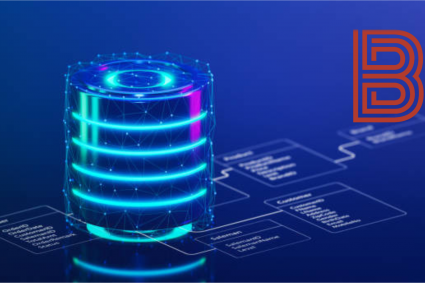Baretzky and Partners Latest News
Risk Mitigation and Compliance

by Admin
Business Risk, Development, and Provision of Opinions on Specific Legal Issues
Introduction In the dynamic world of business, risk is an inevitable component that organizations must address to ensure sustainability and growth. Business risks come in various forms, including financial, operational, strategic, compliance, and legal risks. Companies must implement strategies for risk management, business development, and […]
NewsRroom
by Admin
Track and Trace, KYC, and Enhanced Due Diligence in Risk Management
Introduction Risk management is a fundamental aspect of business operations, ensuring that organizations mitigate threats and remain compliant with regulatory requirements. Among the most crucial tools in risk management are Track and Trace systems, Know Your Customer (KYC) protocols, and Enhanced Due Diligence (EDD) processes. […]
NewsRroom
by Admin
The Fraud Risk of Deepfakes in Cyber Risk Management
Introduction With the rapid advancement of artificial intelligence (AI), deepfake technology has emerged as one of the most concerning threats in the realm of cybersecurity. Deepfakes, which use AI-driven techniques to create realistic fake images, videos, and audio recordings, pose significant fraud risks across industries. […]
NewsRroom




Understanding Data Silos in Cyber Risk Management: Problems, Examples, and Prevention Measures
by Admin
Introduction Data silos occur when data is stored in isolated systems or departments, making it inaccessible or difficult to share with other parts of an organization. While this might seem like a minor operational issue, in the realm of cyber risk management, data silos pose […]
NewsRroom
by Admin
Information policy and rights concern the management, regulation, and access to information within society, often shaping how knowledge and data are controlled, shared, and protected.
At its core, information policy involves setting the rules and frameworks that govern the collection, dissemination, and use of information by individuals, organizations, and governments. These policies aim to balance various societal goals, such as promoting transparency and innovation, while also safeguarding privacy, intellectual property, […]
NewsRroom
by Admin
The Legal Obligation of Domain Registrars to Implement Robust Verification Mechanisms for Domain Name Ownership
Introduction Domain name registration plays a fundamental role in the digital ecosystem, ensuring that individuals, organizations, and businesses maintain unique online identities. Given the increasing use of domain names in commerce, intellectual property, and digital communication, it is imperative for domain name registrars to implement […]
NewsRroom
by Admin
Risk measurement and mitigation are crucial components of risk management in various fields such as finance, engineering, and project management.
Risk measurement involves identifying potential risks, quantifying their likelihood, and estimating their impact. It helps organizations understand the extent of exposure to uncertain events, enabling better decision-making. There are several methods of measuring risk, including qualitative and quantitative approaches. Qualitative methods involve assessing risks based […]
NewsRroom
by Admin
Advanced Deepfake Threat Detection and the Role of AI in Risk Management
Deepfake technology has evolved rapidly, using artificial intelligence (AI) to create highly convincing fake videos, images, and audio. These forgeries pose a growing threat to individuals, businesses, and even governments by manipulating digital content to deceive and harm. Detecting and managing the risks associated with […]
NewsRroom
by Admin
Risk intelligence in cyber risk management refers to the ability of organizations to understand, assess, and respond to cyber threats in a way that balances both the risks and rewards.
It involves not only identifying potential vulnerabilities but also understanding the broader context in which threats might arise and the impact they could have on business operations, reputation, and financial stability. In today’s digital landscape, where cyberattacks are increasingly sophisticated, having risk intelligence is essential […]
NewsRroom
by Admin
A reactive risk strategy focuses on responding to risks after they have already materialized.
Rather than attempting to prevent risks before they occur, this approach emphasizes damage control, mitigation, and recovery when risks become realities. Organizations that rely on reactive risk strategies typically wait until problems emerge before allocating resources to address them. This can be effective in situations […]
NewsRroom
by Admin
Root Cause Analysis (RCA) and Design Thinking are two powerful approaches used in risk management to address problems and mitigate potential risks.
Both methods emphasize a deep understanding of issues, but they employ different perspectives and strategies. Integrating RCA and Design Thinking can enhance risk management by identifying underlying issues and fostering innovative solutions. Root Cause Analysis is a systematic process aimed at identifying the fundamental causes […]
NewsRroom
by Admin
Value Stream Mapping and SWOT Analysis in Risk Management
In today’s competitive business environment, organizations constantly seek ways to improve efficiency, reduce risks, and enhance decision-making. Two valuable tools that play a crucial role in risk management are Value Stream Mapping (VSM) and SWOT Analysis. While these methodologies are distinct, they offer complementary benefits […]
NewsRroom
by Admin
A security assessment is a vital process within risk management, aimed at identifying vulnerabilities, threats, and risks in an organization’s infrastructure, systems, and operations.
Its goal is to evaluate the effectiveness of security controls and determine the overall risk posture, allowing decision-makers to address weaknesses before they lead to data breaches, system failures, or other security incidents. The assessment process typically begins with asset identification, where critical resources such […]
NewsRroom





















